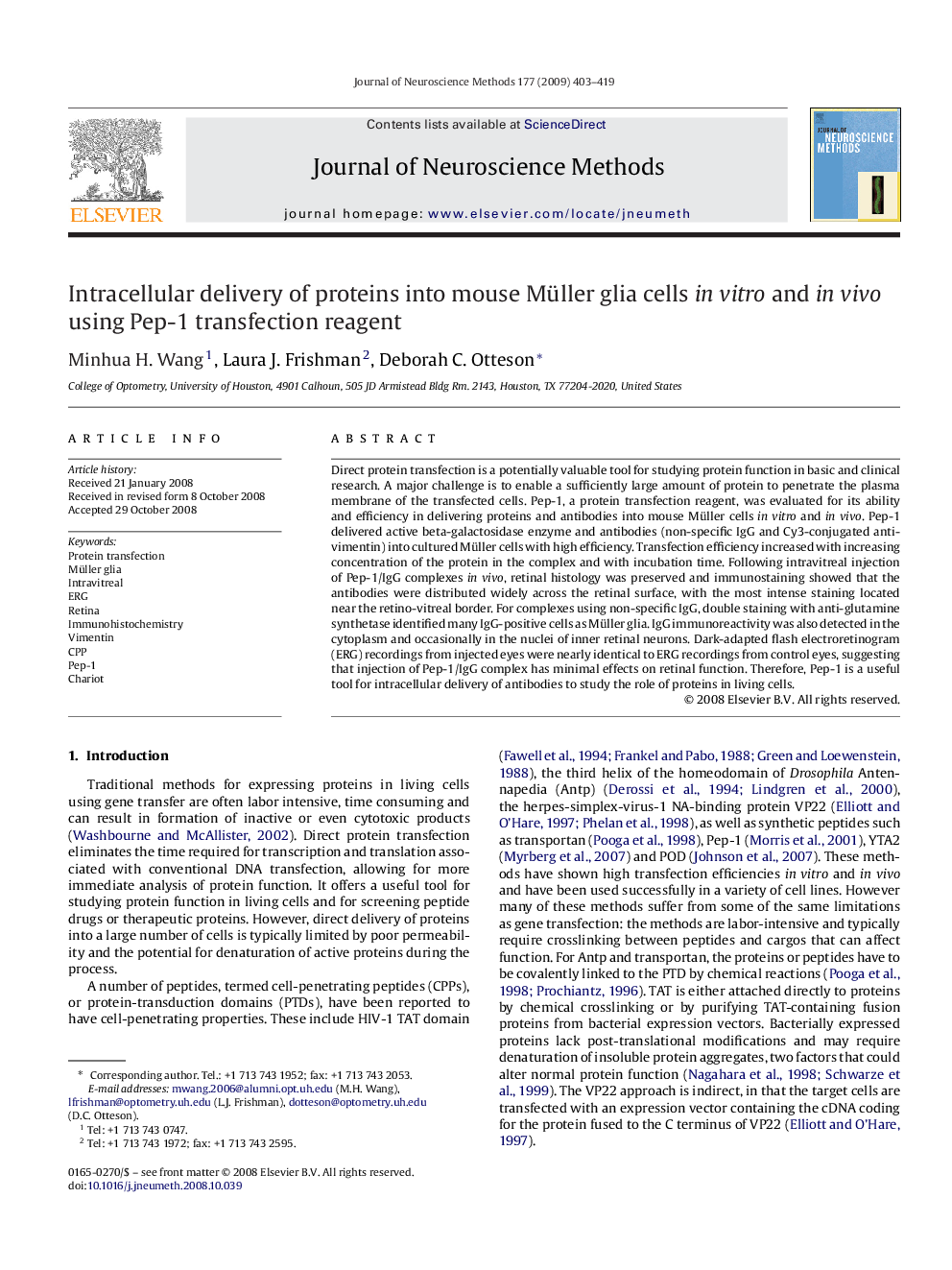| Article ID | Journal | Published Year | Pages | File Type |
|---|---|---|---|---|
| 6270317 | Journal of Neuroscience Methods | 2009 | 17 Pages |
Abstract
Direct protein transfection is a potentially valuable tool for studying protein function in basic and clinical research. A major challenge is to enable a sufficiently large amount of protein to penetrate the plasma membrane of the transfected cells. Pep-1, a protein transfection reagent, was evaluated for its ability and efficiency in delivering proteins and antibodies into mouse Müller cells in vitro and in vivo. Pep-1 delivered active beta-galactosidase enzyme and antibodies (non-specific IgG and Cy3-conjugated anti-vimentin) into cultured Müller cells with high efficiency. Transfection efficiency increased with increasing concentration of the protein in the complex and with incubation time. Following intravitreal injection of Pep-1/IgG complexes in vivo, retinal histology was preserved and immunostaining showed that the antibodies were distributed widely across the retinal surface, with the most intense staining located near the retino-vitreal border. For complexes using non-specific IgG, double staining with anti-glutamine synthetase identified many IgG-positive cells as Müller glia. IgG immunoreactivity was also detected in the cytoplasm and occasionally in the nuclei of inner retinal neurons. Dark-adapted flash electroretinogram (ERG) recordings from injected eyes were nearly identical to ERG recordings from control eyes, suggesting that injection of Pep-1/IgG complex has minimal effects on retinal function. Therefore, Pep-1 is a useful tool for intracellular delivery of antibodies to study the role of proteins in living cells.
Related Topics
Life Sciences
Neuroscience
Neuroscience (General)
Authors
Minhua H. Wang, Laura J. Frishman, Deborah C. Otteson,
